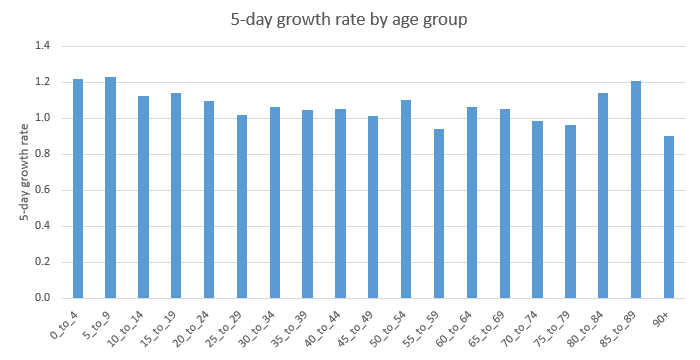
I’ve been away for a few days, and have come back today with a fresh eye. A couple of observations:
1. What was a handful of hotspots before, now looks like more broadly-based growth
2. Whereas growth last week was led by the u20s, it’s now the 20-30s leading the way. 1/5
1. What was a handful of hotspots before, now looks like more broadly-based growth
2. Whereas growth last week was led by the u20s, it’s now the 20-30s leading the way. 1/5
It’s hard to disentangle the effects of the new variant and “Step 3” on 17th May, but it’s plausible that opening up would create the biggest shifts in the mostly-unvaxxed 20-somethings, and the single-vaxxed 30-50s. Schoolkids were already in school, so less affected. 5/end
• • •
Missing some Tweet in this thread? You can try to
force a refresh







